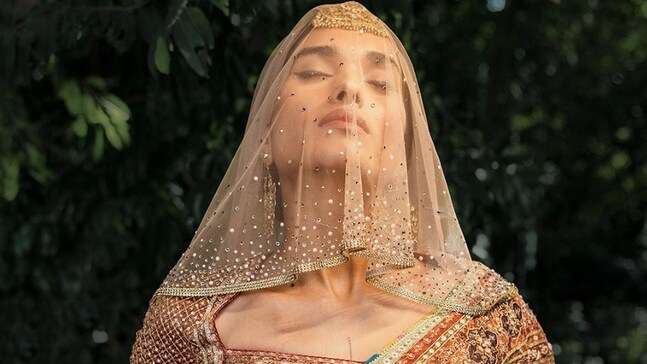- Home
- Fashion
Tarun Tahiliani's transformative world of turning fabric into fantasy
Tarun Tahiliani speaks to HELLO! about how he wears multiple hats in today's world, and still remains relevant by masterfully adding fluidity to his fabrics

From forging a narrative around the Indian drape to launching OTT—his prêt label—and redefining menswear with his philosophy brand, Tasva, Tarun Tahiliani wears more hats than one can count; steadily expanding his empire one innovation at a time. At the core of Tarun Tahiliani’s design philosophy lies the drape—an art form shaped by a litany of techniques, details and creative confluences. Celebrated for reshaping the narrative of the Indian drape, he brought about a paradigm that prioritised comfort, mobility and freedom over anything else. His movement toward empowerment has always been twofold; one that liberates the language of fashion, and one that uplifts the modern Indian woman, together creating a profound impact on the Indian fashion scene.
Famously fluid, architectural and engineered for movement, Tahiliani’s silhouettes are deeply rooted in the sartorial history of India. “If you came to an old market a hundred years back, all the men wore dhotis and kurtas, there was very little way of construction, despite it being in our tradition,” explains the veteran, referencing pagdis and turbans, which the younger generation has often found too laborious to adopt. With this fueling his inspiration, he set out on a quest to reimagine the traditional, structured drape that would resonate with contemporary ease, without losing the essence of India.
“Once you put together a concept saree or a modern blouse with a zipper or divide the ensemble in three pieces, it is easy enough to go dancing all night. No one is trying to be anything but comfortable,” he says. Extending the same ethos to men, he recalled a quote from the late legendary designer Rohit Bal, “Men were the real peacocks of India.” With a nod to the grandeur of angrakhas, jogas, and shawls, he celebrates how the modern Indian man is reclaiming his cultural inheritance—embracing the drape form with elegance and a unique fingerprint.
Revolutionising the industry, one collection at a time
Beyond the drape, the vision for Tahiliani’s fashion resides in cultures and craftsmanship. While his recent collection, Timeless – The Summer Wedding Edit, is a synthesis of his quintessential pillars of craft, technique and modernity, his 2024 Couture collection, Outwardly, explores the concept of divine femininity through youthful, playful silhouettes designed with wearability at their core.
“I see a lot of resilience and grit in the modern Indian woman, who wears many hats while still maintaining her individuality,” he said. “Everyone I meet today is well-educated, well-travelled, and wants to express themselves—reiterating what I’ve always believed, that beauty is amplified when personality shines through and you’re not groaning under the weight of a 30-kilo lehenga.”
With his design language eclectic, inclusive, and unapologetically original, celebrities have often gravitated toward his signature flamboyance. From Mira Rajput Kapoor’s sculpted concept saree to Nita Ambani’s exquisite jamawar saree, his traditional trousseaus are like modern heirlooms that are forever in vogue. When it comes to bridal wear, Tarun’s design lexicon doesn’t falter in options, narratives and technique, acquiring a cult status of sorts.
His wedding collections have long attested his affinity for not just elevating womenswear but also menswear through his visceral, multifaceted and process-driven ethos. From Prateik Babbar and Priya Banerjee’s natural summer wedding ensembles to Radhika Merchant’s chosen look for her nuptials, his couture holds a perennial place in the Indian wedding landscape, making coveted appearances on couture week runways year after year.
Stepping beyond the ceremonial, his luxe prêt label, OTT by TT, works around reinventing daily wear with ensembles that are expressive and deeply personal. As he once described, “Feminine yet commanding, inventive yet practical, it champions elegance through the manipulation of simple yet thoughtfully constructed pieces.” On a constant quest to reinvent, he creates with the sole intention of making clothing synonymous with second skin.
The right fits
Opulent fabrics, intricate detailing and modern silhouettes—these are the tenets that Tarun Tahiliani has long upheld as the sartorial pillars of the cosmopolitan man. Imbuing this philosophy into his menswear label, Tasva, he has created a new archetype for the modern groom. With the unveiling of the new flagship store in Pune, the designer chose Vijay Varma as the face of the launch.
The flagship, which houses both festive and wedding collections, offers a bespoke luxury retail experience, with assistance from trained stylists to curate looks for every groom and guest. “Pune is an undiscovered jewel of India,” Tahiliani explained. “It’s an understated cosmopolitan city. And typically, understated communities understand quality—not because they want to show off bling, but because they appreciate textiles. It’s a more measured approach to fashion.” As for his muse, Tahiliani sees Varma’s style as effortless, experimental and individualistic—“essentials for great fashion,” he said.
Identity for fashion in 2025
If 2024 was the year of icons, 2025 is poised to be the year of identity and expression. The urban milieu has gradually, albeit loyalty, shifted towards the English colour palette—think everything (little) that is on the spectrum of lilac-y mauve to soft shell pink. Tahiliani predicts a toned-down aesthetic that still feels dressy and reflects our identity today. Translating personal identity into fashion has always come natural to the designer. For him, if you have a certain taste for food or colour, you are going to have a certain way of dressing that will reflect things about you consciously or unconsciously. “Don't try to be something you're not”—remains an unwavering piece of advice from the designer.
As we look to the future, his parting thought rings clear: “In 2025, I’m saying hello to all that is mine, and encouraging everyone to be the best version of themselves. It’s different for everyone and changes with time, but there’s never been a better moment in our country to explore that possibility.”